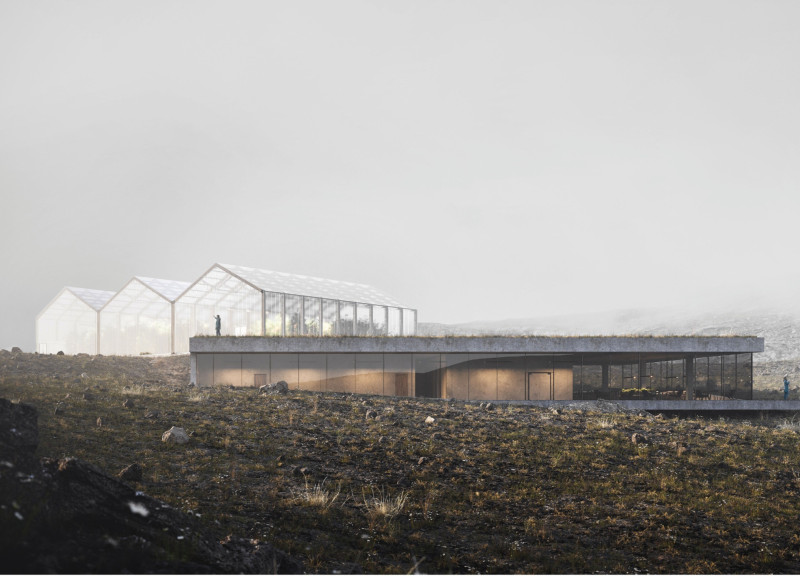5 key facts about this project
This architectural design embodies the concept of marrying functionality with aesthetics. The restaurant serves as a hub for both locals and tourists, promoting not only culinary experiences but also environmental awareness. Visitors are treated to fresh ingredients grown on-site, underscoring the importance of local agriculture and sustainable practices in contemporary dining.
The project features various important elements that enhance both its function and visual appeal. One significant aspect is the extensive use of polycarbonate glazing in the greenhouse sections. This provides the necessary light for plant growth while allowing diners in the restaurant to enjoy views of the surrounding landscape. The greenhouse design capitalizes on Iceland’s abundant natural resources, incorporating geothermal heating to support year-round crop production. This thoughtful approach ensures that the restaurant maintains a low carbon footprint while also highlighting the region’s geothermal energy potential.
Another important part of the design is the incorporation of a green roof, which serves multiple purposes. It enhances insulation, manages rainfall effectively, and allows the building to blend into its environment. This characteristic not only has aesthetic benefits but also contributes to the building's sustainability by mitigating stormwater runoff and promoting biodiversity in the area.
The layout of the Iceland Greenhouse Restaurant has been meticulously planned to facilitate optimal flow for both guests and staff. The dining area is positioned to maximize natural light and provide expansive views of Myvatn Lake and the surrounding geological features. Outdoor terraces extend the dining experience into nature, allowing patrons to enjoy fresh air while taking in the scenic beauty. The strategic orientation not only enhances visitor experience but also creates an inviting atmosphere that encourages lingering.
Accessibility has also been a key focus in the project’s design. Clear pedestrian pathways guide visitors from parking areas to the main entrance, ensuring ease of movement and enhancing inclusivity. By prioritizing accessibility, the project ensures that all guests can engage with the restaurant and its offerings without barriers.
What distinguishes this architectural project is the deliberate approach taken to blend the built environment with the natural one. Rather than imposing a structure onto the landscape, architects have designed it to emerge from the ground. The materials used in construction, including reinforced concrete for the structural elements and timber for warmth, reinforce this connection with the earth. The use of local resources and sustainable practices speaks volumes about the commitment to environmental stewardship prevalent throughout the design process.
In summary, the Iceland Greenhouse Restaurant is a thoughtful architectural project that resonates with its environment while providing a unique dining experience. Its innovative design integrates functionality, sustainability, and aesthetic appeal. Readers interested in a deeper exploration of this architectural endeavor are encouraged to examine the architectural plans, sections, and designs to gain further insights into the project’s thoughtful execution and innovative ideas. Exploring these elements will provide a richer understanding of how architecture can harmoniously coexist with nature while fulfilling the needs of its users.


























